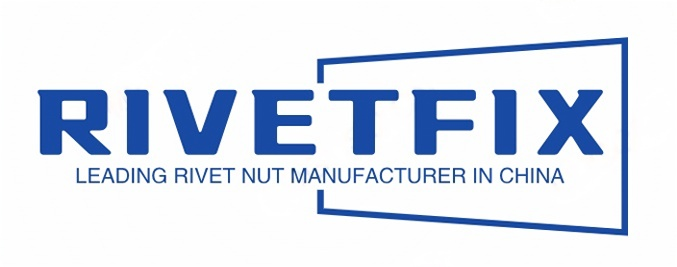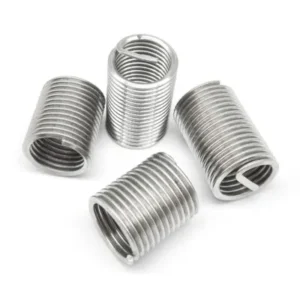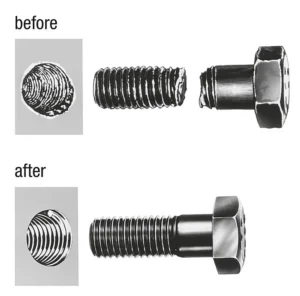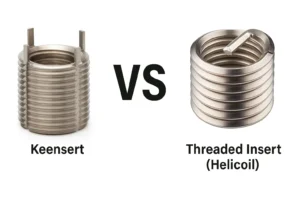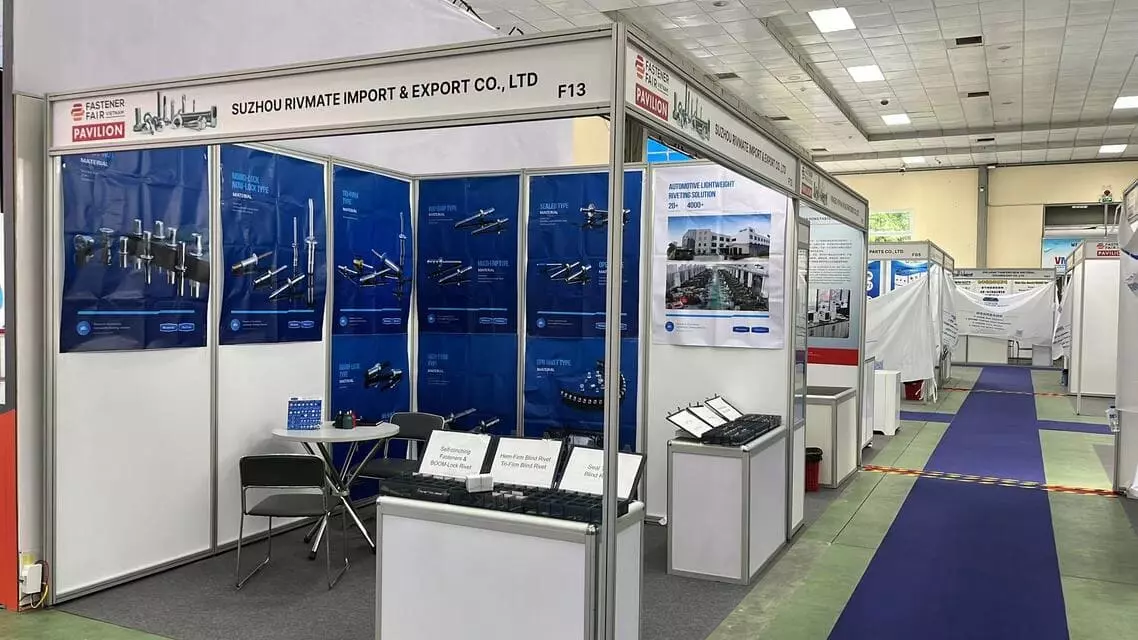Threaded Inserts vs Screws: Complete Guide
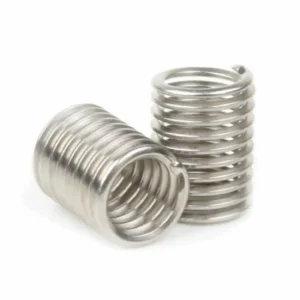
Leading Threaded Inserts Manufacturer and Supplier in China
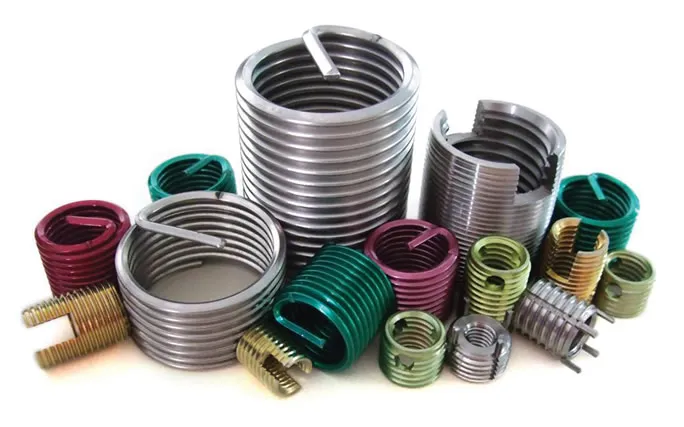
When it comes to creating strong, reliable fastening solutions, threaded inserts vs screws is a common comparison faced by engineers, designers, and DIY enthusiasts alike. While screws are widely used for their simplicity and cost-effectiveness, threaded inserts offer superior strength, durability, and repeatability in many demanding applications. In this guide, we’ll explore the key differences between the two, helping you choose the best option based on material type, installation requirements, and long-term performance.
Table of Contents
What’s the Difference Between Threaded Inserts and Screws?
a. What is a screw?
A screw is a type of fastener that directly penetrates and engages the base material to form a connection, relying on the friction between its external thread and the base material to achieve fixation. It is commonly used in wood, plastic, or thin metal sheets, with the advantage of simple installation and no need for additional structural components.
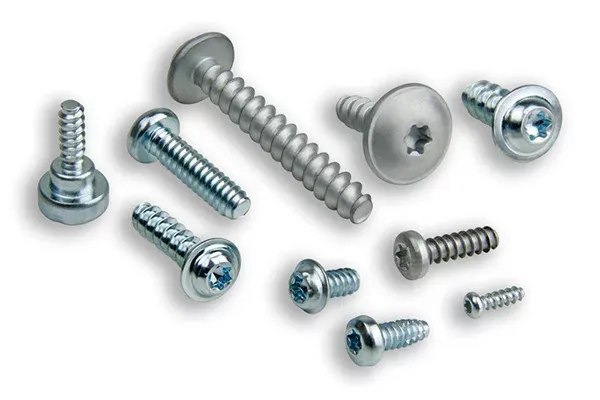
- Advantages: No auxiliary parts required, quick installation, low cost;
- Limitations:
- It can easily cause fatigue in the base material, especially in soft materials where repeated disassembly and assembly can easily damage the threads;
- Under long-term load or vibration conditions, it is prone to loosening or thread stripping;
- It is not suitable for connections that require high precision or frequent disassembly and assembly.
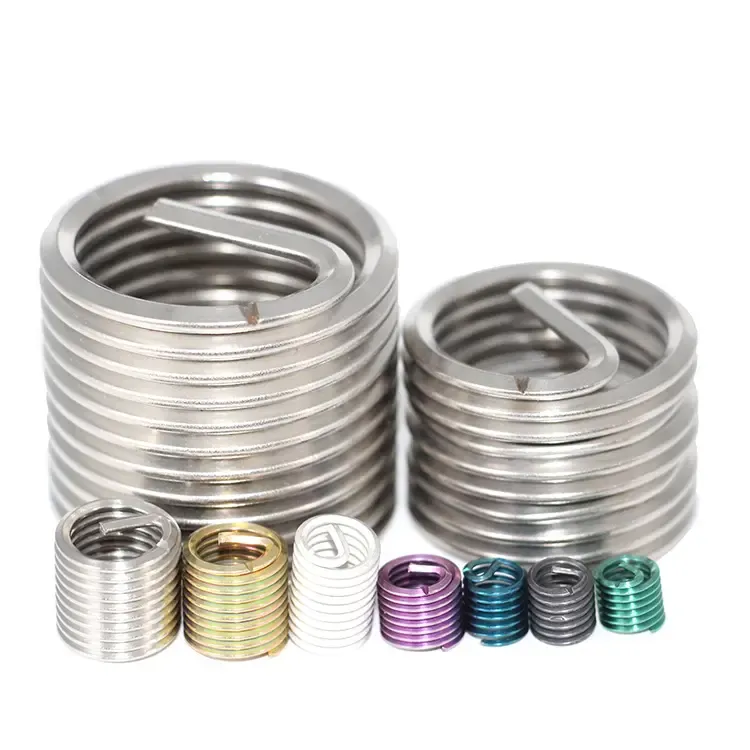
A threaded insert is a metal connection structural component embedded in the base material (such as wood, plastic, or metal), with standard threads on the inner side and an outer structure (such as knurling, self-tapping, or conical threads, etc.) for firmly embedding in the base material. It significantly enhances the stability and durability of the connection by creating a reusable metal threaded interface in the base material.
- Advantages:
- Superior reusability, suitable for frequent disassembly and assembly;
- Provides higher tensile and shear resistance;
- Can be used in weak or non-threadable materials such as plywood, plastic, and thin metal sheets;
- Easy to maintain and replace without damaging the main structure.
- Limitations: Installation process is slightly complex (requiring pre-drilling/press-fitting/heating, etc.), and the initial cost is slightly higher.
Table: Difference Between Threaded Inserts and Screws
| Item | Screws | Threaded Inserts |
|---|---|---|
| Installation Principle | Directly cut threads into base material | Create an independent metal thread within base material |
| Reusability | Poor; prone to thread stripping | Excellent; internal threads remain intact after reuse |
| Substrate Requirements | Requires threadable material | Suitable for soft, thin, or composite materials |
| Tensile/Shear Strength | Low; loosens over time under load | High; provides stable, durable connection |
| Installation Method | Simple; screwdriver or drill | Requires pre-drilling or specialized tools (heat press, press-fit) |
| Cost & Service Life | Low upfront cost, short lifespan | Higher initial cost, better long-term cost-efficiency |
When Should You Use Threaded Inserts Instead of Screws?
In the actual design and manufacturing process, the following types of application scenarios are more suitable for using threaded inserts rather than traditional screws. Compared to direct tapping, inserts can significantly enhance structural reliability, repeat service life and maintenance efficiency, especially in soft materials and precision structures.
①. Soft material connections (wood, plastic, composite panels)
When screws are directly inserted into soft materials such as wood or plastic, the threads are prone to wear after the first assembly. Inserts form a stable metal interface in the base material through a self-drilling structure or thermal fusion pressing. Even after repeated assembly and disassembly, the thread strength remains unchanged.
- Typical scenarios: Furniture connectors, plastic housings, electronic device brackets.
- Advantages: Reduces the risk of “tearing” and enhances connection strength.
②. Frequent Disassembly or Maintenance Structures
If the structure needs to be disassembled and reassembled regularly (such as for maintenance, module replacement, etc.), using ordinary screws will accelerate the fatigue of the base material’s threads. The insert provides high-strength metal internal threads, which can be repeatedly locked and disassembled while maintaining consistent accuracy.
- Typical scenarios: Industrial fixtures, back covers of 3C products, control panels.
- Advantages: Extends the service life of the structure and reduces maintenance costs.
③. Connection of Metal Sheets (<1.5mm)
The thickness of thin steel plates or aluminum plates is insufficient for direct thread tapping. Using embedded parts such as press rivets or pull rivets becomes a more reliable solution, avoiding thread slippage, welding heat influence and secondary processing.
- Typical Applications: Sheet metal enclosures, automotive sheet parts, mechanical and electrical assembly.
- Advantages: High-strength permanent connection, compatible with single-sided assembly process.
④. Anti-vibration / High-load Operating Conditions
Ordinary screws are prone to loosening under vibration or load. Some embedded parts are designed with anti-loosening teeth, self-locking structures or mating thread adhesives, which can maintain reliable locking force in high dynamic environments.
- Typical Scenario: Robot structure, motor base, and connection of mobile devices.
- Advantages: Higher stability, reduced failure of fasteners.
⑤. Surface treatment should not damage the underlying structure
When the product has anti-corrosion coatings such as powder coating, electrophoretic coating, or anodizing, direct tapping or repeated screwing in may easily damage the surface film layer, resulting in corrosion failure. Using inserts can be pre-installed before the coating, avoiding secondary processing.
- Typical Scenario: Stainless steel control cabinets, outdoor equipment enclosures.
- Advantage: Protects surface integrity and enhances the overall appearance lifespan of the equipment.
Table:Use Threaded Inserts Instead of Screws
| Application Scenario | Why Threaded Inserts Are Preferred |
|---|---|
| Wood/Plastic Structures | Enhances thread strength, prevents stripping |
| High-Frequency Disassembly | Allows reuse, maintains thread accuracy |
| Thin Metal Sheet Connections | Provides thread support when sheet is too thin |
| Dynamic Load / Vibration Areas | Reliable anti-loosening, prevents joint failure |
| Coated/Plated Surface Structures | Preserves protective finish, ensures long-term stability |
How Do Threaded Inserts Perform Compared to Screws?
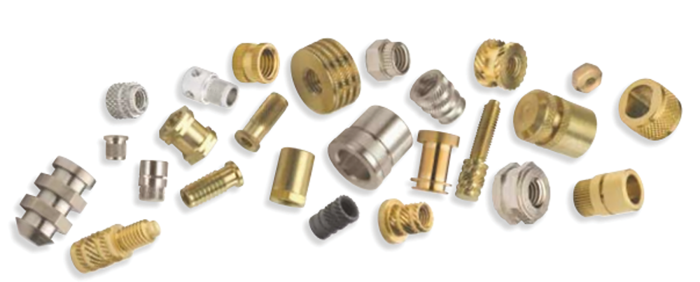
In structural connections, pull-out strength, shear strength, and reusability cycle life are the core indicators for evaluating the reliability and long-term performance of the connection. Compared to ordinary screws, threaded inserts demonstrate superior structural stability and engineering compatibility in these three aspects.
Comparison of Bearing Capacity
The anti-pull-out force measures the ability of the thread to resist detachment in the vertical direction, and determines the stability of the connection under tensile load.
| Material Type | Regular Screw Pull-Out Strength | Threaded Insert Pull-Out Strength (Recommended Type) |
|---|---|---|
| Plywood (18mm) | 180–250 N | 500–900 N (Self-tapping Insert) |
| ABS Plastic | 150–220 N | 450–800 N (Heat-Set Insert) |
| Aluminum Alloy Sheet (2mm) | Not machinable / Unstable | 900–1200 N (Press-Fit Insert) |
Conclusion: The anti-pull-out force provided by the insert is typically 2 to 4 times that of a regular screw, making it particularly suitable for environments with vibration loads or dynamic assembly conditions.
Comparison of Shear Resistance
The shear resistance force reflects the ability to resist shear failure under lateral load, and it is a key indicator in high-load structures.
- Common screws (M4 wood screws): The shear limit is approximately 400 to 600 N;
- M4 brass insert + 8.8 grade screws combination: The shear limit is ≥ 1200 N;
- Stainless steel thick-walled insert + A2-70 screws: The shear limit is ≥ 1800 N. Conclusion: The insert provides a more stable metal-to-metal locking structure, which is particularly suitable for industrial/loadsensitive connection points.
Comparison of Service Life
- Ordinary screws directly bite into wood or plastic threads. After multiple installations and removals, the threads of the base material will become ineffective, and the service life is usually less than 50 times;
- High-quality threaded inserts use precisely machined metal internal threads. They can withstand more than 200 to 1000 repeated disassemblies while still maintaining locking accuracy.

Table:Threaded Inserts Perform Compared to Screws
| Performance Indicator | Regular Screw | Threaded Insert |
|---|---|---|
| Pull-Out Strength | Medium / Prone to Stripping | High / Stable |
| Shear Strength | Medium to Low / Depends on Base Material | High / Can Use High-Strength Screws |
| Repeated Use Lifespan | ≤ 50 cycles | ≥ 200–1000 cycles |
| Recommended Applications | One-time Connections, Light Loads | Removable Structures, Soft Materials, High-Frequency Maintenance Parts |
Are Threaded Inserts Cost-Effective Compared to Other Fasteners?
From the perspectives of procurement cost, installation cost and maintenance cycle, although the single-piece price of threaded inserts is slightly higher than that of ordinary screws or T-Nuts, due to their superior durability and reusable performance, they often have higher economic value in the long run.
- Procurement Cost: The material and manufacturing process of threaded inserts determine that their unit price is higher than that of traditional fasteners, especially for high-performance steel wire inserts or hot-melt inserts.
- Installation Cost: Some threaded inserts require special installation tools or equipment, which incurs a large initial investment. However, after standardization of the operation, the installation efficiency can be improved, and labor costs can be reduced.
- Maintenance Cycle: Due to their strong resistance to wear and ability to be repeatedly disassembled, threaded inserts can significantly extend the service life, reduce the frequency of maintenance and replacement, and thereby lower the long-term maintenance costs.
Overall, for important projects that require high-intensity, frequent disassembly and assembly, as well as durability, threaded inserts offer a higher return on investment and are a worthy investment in a high-performance solution.
Threaded Inserts vs Screws: Installation Differences
In the selection and application of fasteners, there are significant differences in installation techniques between threaded inserts and ordinary screws. These differences directly affect assembly efficiency, connection strength, and the integrity of the base material.
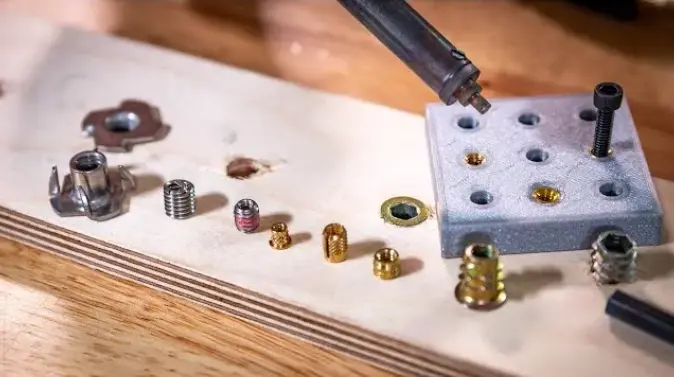
Differences in Pre-drilled Hole Requirements
- Common Screws: In most cases, especially when working with soft materials such as wood or plastic, screws can be directly screwed in without the need for pre-drilling (except for self-tapping screws). For harder materials, a guiding hole may need to be drilled first, but the hole diameter is usually smaller and the process is relatively simple.
- Threaded Inserts: When installing threaded inserts, precise drilling is usually required. The diameter and depth of the hole must strictly match the specifications of the insert to ensure a strong and secure bond between the insert and the base material. Deviations in the pre-drilled hole size can cause the insert to loosen or damage the base material, demanding higher processing accuracy.
Difference in Tool Complexity
- Regular screws: During installation, an electric screwdriver or a manual screwdriver is usually sufficient. The process is simple, the cost of the tools is low, and the popularity is high. They are suitable for rapid assembly and on-site construction.
- Threaded inserts: Depending on the type of the insert, installation may require specialized tools. For example:
- Heat-set inserts need to be heated and integrated into the plastic using a heat soldering iron or a heat press machine.
- Screw-in threaded inserts require a hex wrench or an electric screw-in tool.
- Press-in inserts may require hydraulic or mechanical press-fitting equipment. These tools not only increase the initial investment, but also impose higher requirements on the technical skills of the operators.
Risk of Damaging the Base Material
- Regular screws: When screwed in directly, without using pre-drilled holes, it is prone to cause material cracks, warping or thread slippage, especially for brittle materials and thin-walled structures. Moreover, frequent disassembly will aggravate thread damage and reduce the connection strength.
- Threaded inserts: Since threaded inserts provide a metal thread strengthening layer for the base material, they effectively disperse stress and reduce the risk of thread damage. High-quality inserts installed correctly can significantly enhance the durability and stability of the connection, especially suitable for multiple disassembly or vibration environments. However, improper installation (such as excessive hole diameter or incorrect installation angle) may cause cracks in the base material or loosening of the inserts.
Installation Differences Of Threaded Inserts And Screws
In terms of installation process, although threaded inserts require higher precision for the pre-drilled holes and more sophisticated tools, they can significantly enhance the connection strength and durability, making them suitable for applications with high connection performance requirements. On the other hand, ordinary screws are easy to install and are suitable for scenarios with low costs and rapid assembly. The appropriate choice depends on the material properties, structural design, and usage environment. It is recommended to make a decision based on specific needs after careful consideration.
Common Materials: What Works Best with Inserts or Screws?
① Wood (Plywood, MDF, Solid Wood)
Regular screws: Suitable for temporary installation or light-load scenarios, such as simple furniture assembly. However, long-term use may cause the threads to loosen or slip, especially after repeated assembly and disassembly in soft wood or fiberboard, which becomes more obvious.
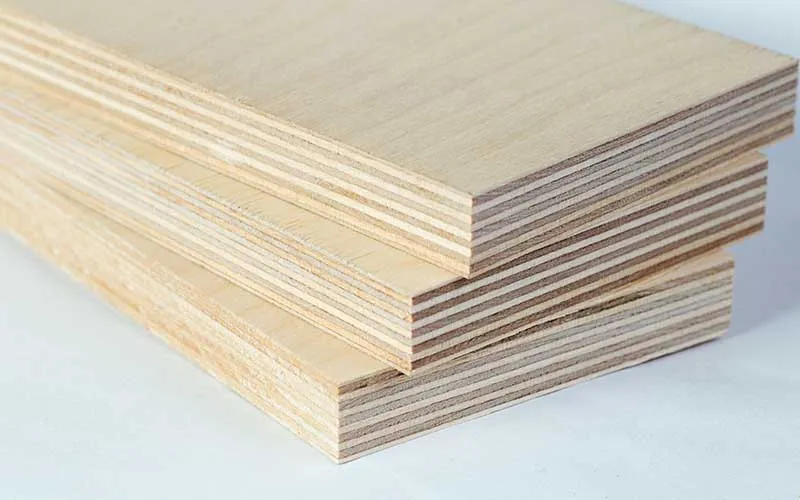
Threaded inserts: It is recommended to use self-tapping inserts or external-threaded wood inserts, which can significantly enhance the strength of the threaded connection and increase the number of disassembly and assembly operations. They are particularly suitable for scenarios with frequent maintenance or replaceable components.
② Plastics (ABS, PC, PA, etc.)
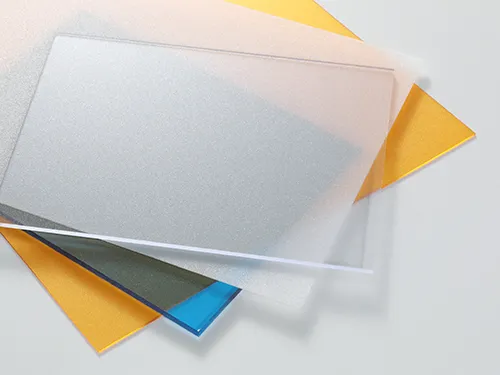
- Regular screws: They are prone to cracking or damaging the threads, especially when the plastic deforms due to heat or force, resulting in unstable connections.
- Threaded inserts: It is recommended to use hot-melt inserts or ultrasonic inserts. These are fused into the plastic through heating or vibration, forming a sturdy threaded support structure, suitable for electronic housings, structural supports, and other parts.
③ Metals (aluminum alloy, stainless steel sheet)
- Common screws: In thin plate materials, tapping is often not possible directly, resulting in poor connection strength and easy loosening; auxiliary nuts are required to be used, increasing the complexity of installation.
- Threaded inserts: Press-bonding inserts and pull-bonding nuts are better choices. They can firmly fix on the metal plates and are suitable for environments requiring high-strength connections such as aviation structural components, mechanical enclosures, and aluminum profiles.
④ Composite Materials (Carbon Fiber Sheets, Fiberglass, Sandwich Structures, etc.)
- Regular screws: They are difficult to form reliable threaded connections and are prone to damaging the composite material structure, resulting in delamination and cracking.
- Threaded inserts: Special composite material inserts (such as spline inserts, expansion inserts, etc.) should be used to achieve a stable engagement of the thin-layer structure, ensuring strength and avoiding material damage. They are commonly used in high-end applications such as unmanned aircraft and automotive structural components.
Material Compatibility Guide: Screws vs Threaded Inserts
| Material Type | Screw Applicability | Common Issues | Recommended Insert Type |
|---|---|---|---|
| Wood | ✔ Suitable for temporary use | Easy to strip, poor performance in repeated use | Self-tapping inserts, wood threaded inserts |
| Plastic | ✘ Not recommended | Prone to cracking, thread loosening from heat | Heat-set inserts, ultrasonic inserts |
| Metal | ✘ Not recommended | Difficult to tap directly, weak thread strength | Clinch nuts, rivet nuts |
| Composites | ✘ Not recommended | Risk of delamination or cracking | Knurled inserts, expansion inserts |
Pros and Cons Table: Threaded Inserts vs Screws
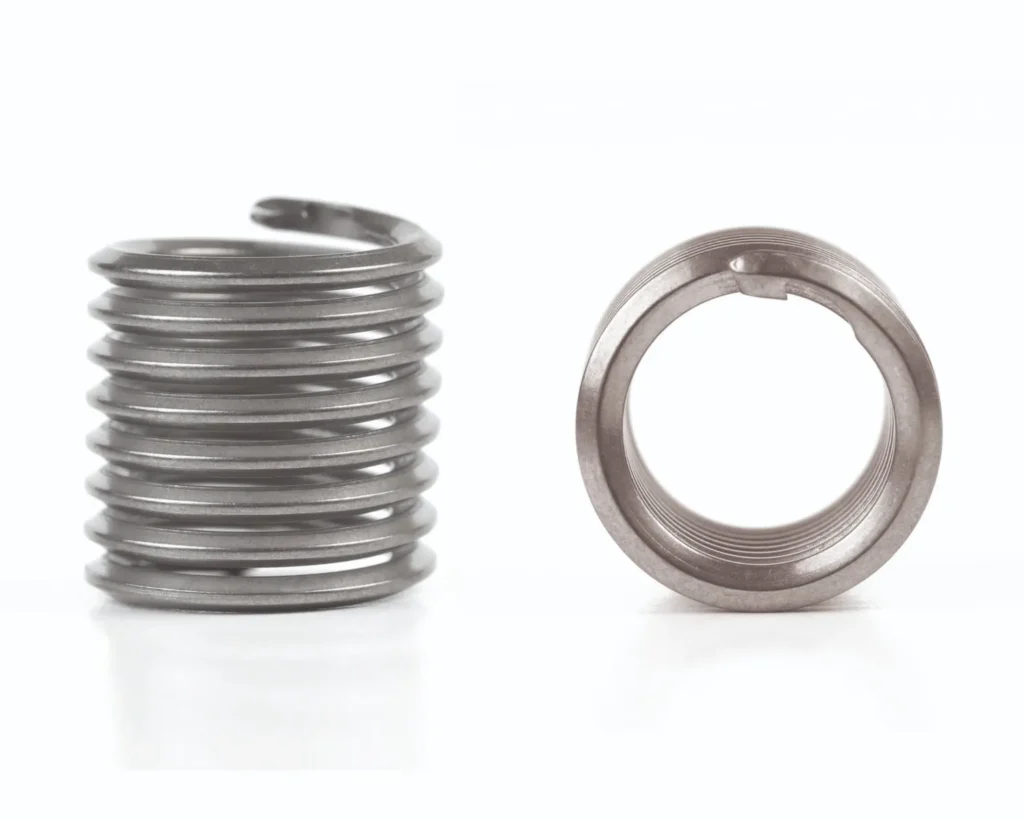
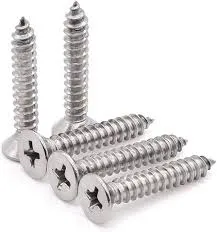
| Comparison Criteria | Threaded Inserts | Screws |
|---|---|---|
| Pull-Out Resistance | Enhanced thread structure offers high pull-out strength, ideal for load-bearing or frequent assembly/disassembly. | May strip easily in softer materials or after repeated use; lower pull-out resistance. |
| Reusability | Designed for multiple assembly cycles (hundreds of times) while maintaining thread integrity. | Threads wear out after a few uses, reducing fastening reliability. |
| Material Compatibility | Suitable for a wide range of materials—wood, plastic, metal, and composites—especially effective in soft materials. | Primarily used in hard woods or metals; poor performance in soft or brittle substrates. |
| Installation Process | Requires pre-drilling and special installation tools; demands proper alignment and precision. | Can be driven in directly or with basic pre-drilling; simple and fast. |
| Structural Stability | Creates a strong metal-thread structure in the base material, ensuring long-term connection strength. | May loosen over time under stress or vibration; less stable structurally. |
| Cost Consideration | Slightly higher initial cost, but lower maintenance and longer service life. | Lower upfront cost, but higher replacement frequency in the long term. |
| Recommended Use Cases | Ideal for high-maintenance parts, load-bearing joints, or soft material connections. | Best for one-time assemblies, temporary fixes, or light non-structural use. |
Conclusion: Choose Based on Function
In actual engineering and product design, screws, as a common type of fastener, are widely used due to their convenience and low cost. However, habitually using screws is not always the best choice. In contrast, threaded inserts demonstrate more professional and reliable performance in terms of structural strength, reusability, material compatibility, and seismic stability.
If the product structure needs to withstand significant tensile or shear forces, or involves frequent disassembly and installation on soft materials (such as plywood, plastic or thin metal), it is recommended to preferentially use threaded inserts. This not only extends the product’s lifespan but also reduces the costs of subsequent maintenance and replacement.
Scientific selection should be based on structural performance rather than following conventional practices.
During the design stage, one should weigh the connection strength, installation process, and material compatibility to select the truly suitable fastening solution, ensuring that the product is more stable, durable, and professional.
Do You Have Any Questions?
Let Us Solve Your Problem
Why Rivetfix Is the Right Partner for Precision Inserts

As a globally leading manufacturer and supplier of threaded inserts, Rivetfix is committed to providing professional and reliable fastening solutions to its customers. We not only offer a wide range of standard products, but also possess strong custom development capabilities, which enables us to tailor the most suitable threaded insert products according to different materials, load requirements, and installation environments. No matter whether you need high-strength inserts suitable for wood, plastic or metal, or high-precision connection solutions for industries such as manufacturing, furniture, electronics, etc., Rivetfix can provide you with:
- One-stop solution: Full-process support from product design, selection advice to batch supply
- High-quality assurance: Strict quality control system and international certifications
- Quick-response engineering support team: Assist you in completing project development and test verification quickly
- Global supply chain capability: Support for large orders and cross-border shipping needs Choosing Rivetfix means choosing a more efficient, more professional and more reliable partner for threaded inserts.
Please feel free to contact us to obtain samples and technical support!
Get High Quality Rivet Nuts Quote!
Send Your Rivet Nut Request
For more than 20 years, Rivetfix has helped customers solve many rivet nuts sourcing needs and technical challenges.
Have a question? Contact us and we’ll provide you with the perfect solution.
